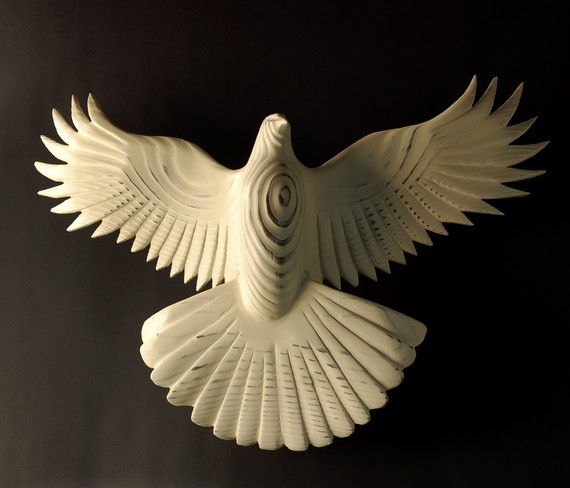Greek Hot Air Balloon? May 7, 2017
Author: Beach Combing | in : Ancient , trackbackThis little tale appears in a vaguely sceptical Aulus Gellius, whose Attic Nights provides some very enjoyable reading for those wishing to travel back into the ancient world.
that which Archytas the Pythagorean [obit 347 BC] is said to have devised and accomplished ought to seem no less marvellous, but yet not wholly absurd. For not only many eminent Greeks, but also the philosopher Favorinus [obit 160 AD?], a most diligent searcher of ancient records, have stated most positively that Archytas made a wooden model of a dove with such mechanical ingenuity and art that it flew; so nicely balanced was it, you see, with weights and moved by a current of air enclosed and hidden within it. About so improbable a story I prefer to give Favorinus’ own words: ‘Archytas the Tarentine, being in other lines also a mechanic [engineer], made a flying dove out of wood. Whenever it lit, it did not rise again. For until this . . . .’
Sed id, quod Archytam Pythagoricum commentum esse atque fecisse traditur, neque minus admirabile neque tamen vanum aeque videri debet. Nam et plerique nobilium Graecorum et Favorinus philosophus, memoriarum veterum exsequentissimus, affirmatissime scripserunt simulacrum columbae e ligno ab Archyta ratione quadam disciplinaque mechanica factum volasse; ita erat scilicet libramentis suspensum et aura spiritus inclusa atque occulta concitum. Libet hercle super re tam abhorrenti a fide ipsius Favorini verba ponere: Ἀρχύτας Ταραντῖνος, τὰ ἄλλα καὶ μηχανικὸς ὤν, ἐποίησεν περιστερὰν ξυλίνην πετομένην· ὁπότε καθίσειεν, οὐκέτι ἀνίστατο. μέχρι γὰρ τούτου . . . [there is a lacuna here]
This tale particularly excited eighteenth-century writers because it was believed to be the first record of a hot air balloon: i.e. buoyant air making something fly. Beach doesn’t normally like the eighteenth century and he particularly dislikes eighteenth-century writers, and surely they are wrong about this (as with many, many other things)? What kind of wood could have been used for an operation of this type? Beach has had some fun looking at the lightest wood available to the ancient Mediterranean and has landed on Silver Fir which is still though about three times heavier than balsam. An alternative is that Archytas had designed a model dove that caught the breeze flew fifty or a hundred yards? The weights would have been to balance the bird out? Any other thoughts: drbeachcombing At yahoo DOT com A wooden bird light enough to fly, would probably imitate the flight path of a dove?
Imagine what some dishonest early Christians could have done with a flying dove! Ooh la la.
Henry T writes, 31 May 2017: What if it wasn’t the actual wood, but the bark that the “bird” was made from? Just a thought
Bruce T. 31 May 2017: If you got to Wikipedia you’ll see two accounts of early flying bird automata in China in the period just preceding and concurrent with the Greek fellow’s dove. It must have been a wonder that no self respecting tyrant, King or Emperor with the funds for, left home without.
Alan L, 31 Mary 2017: So Archytas’ dove was “moved by a current of air enclosed and hidden within it”. Sounds as if he invented a sort of rocket rather than a hot-air balloon! Perhaps it worked like Heron’s Aeliopile, using a jet of steam? Archytas lived about 400 years before Heron, but could he not have come across the same principle independently? And the word “ligno” may be a bit restrictive; it could have used bark paper for the lifting surfaces. Somebody should try and make one! I’m convinced that primitive gliders and flying models were achievable using the technology of the Classical era. [Alan acknowledges that the idea is all over the net, but it was new to me!]



